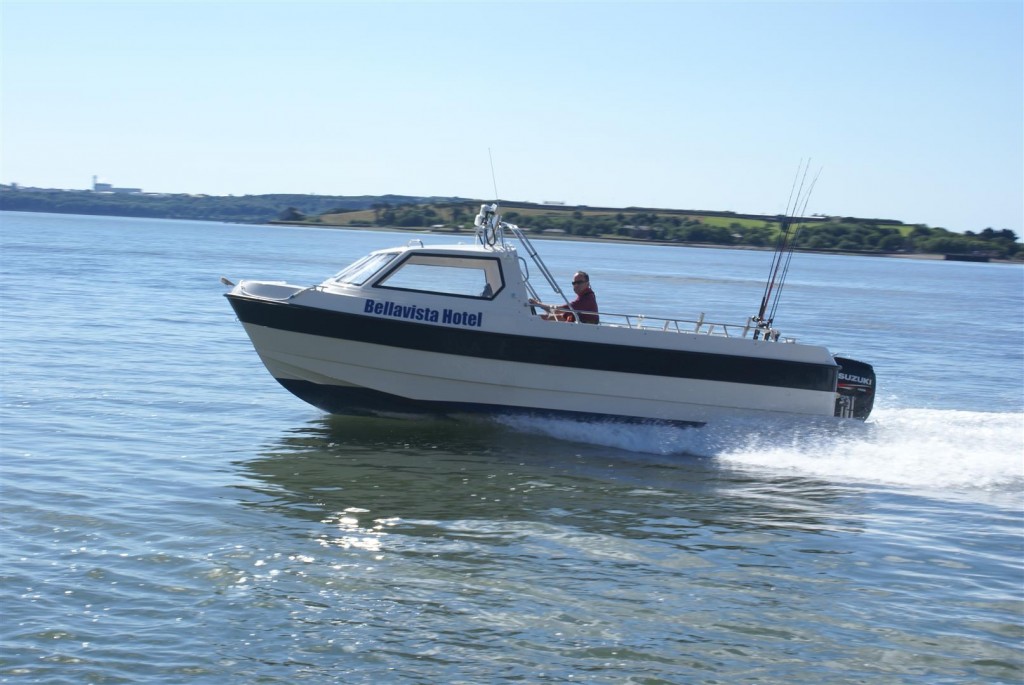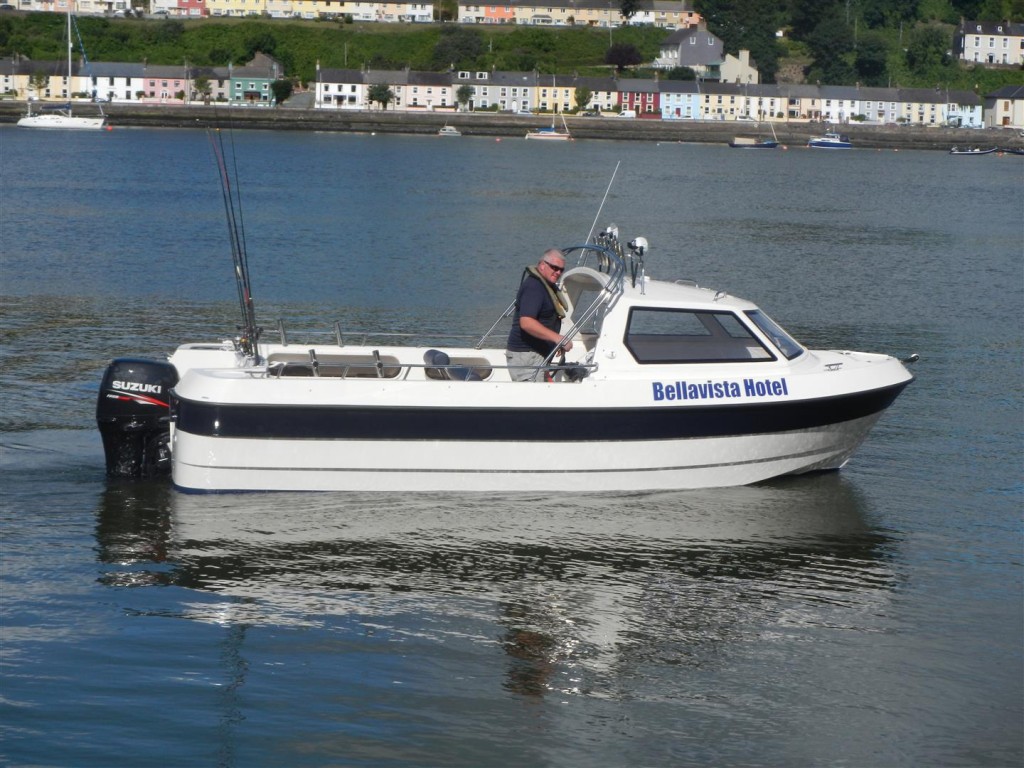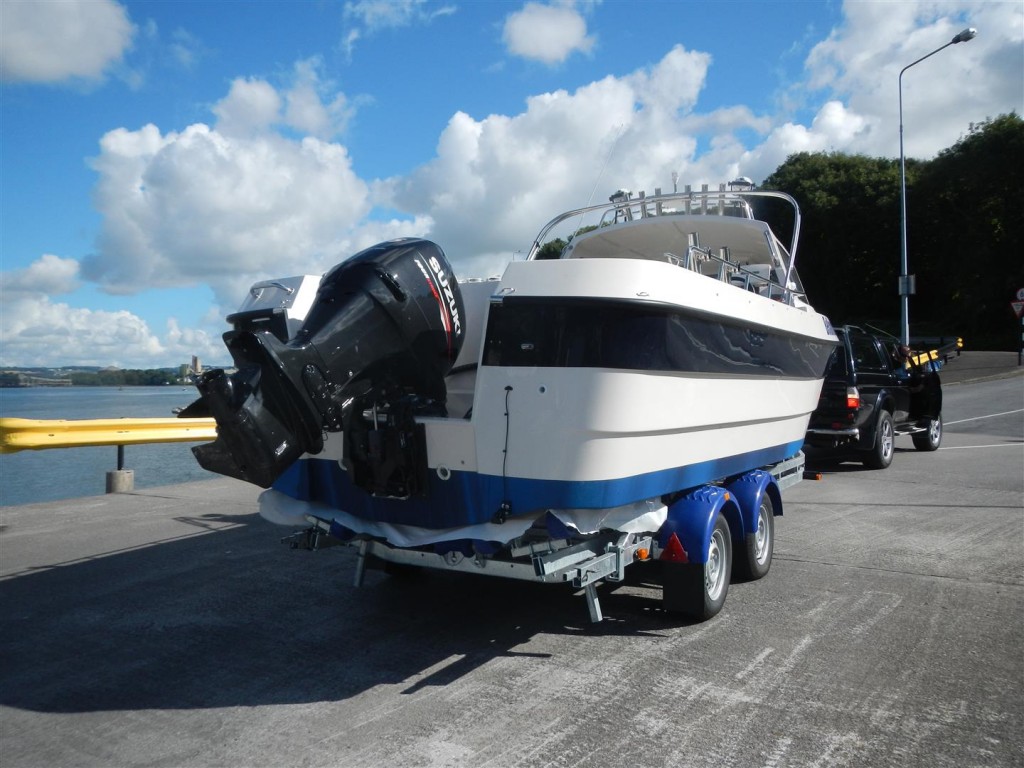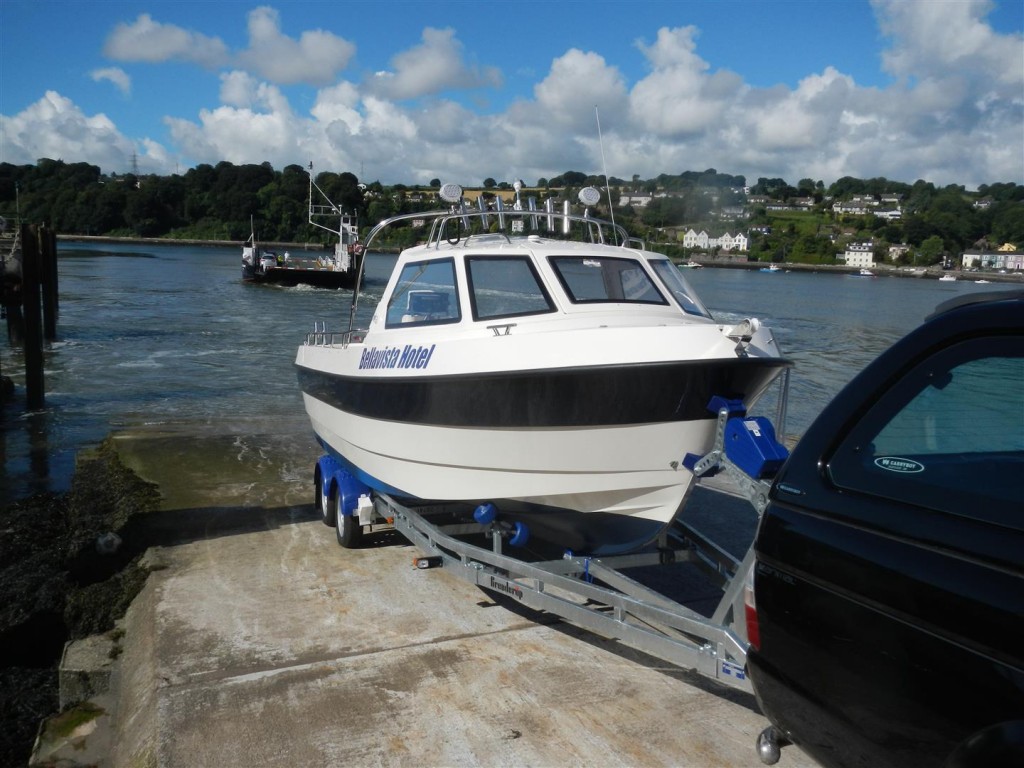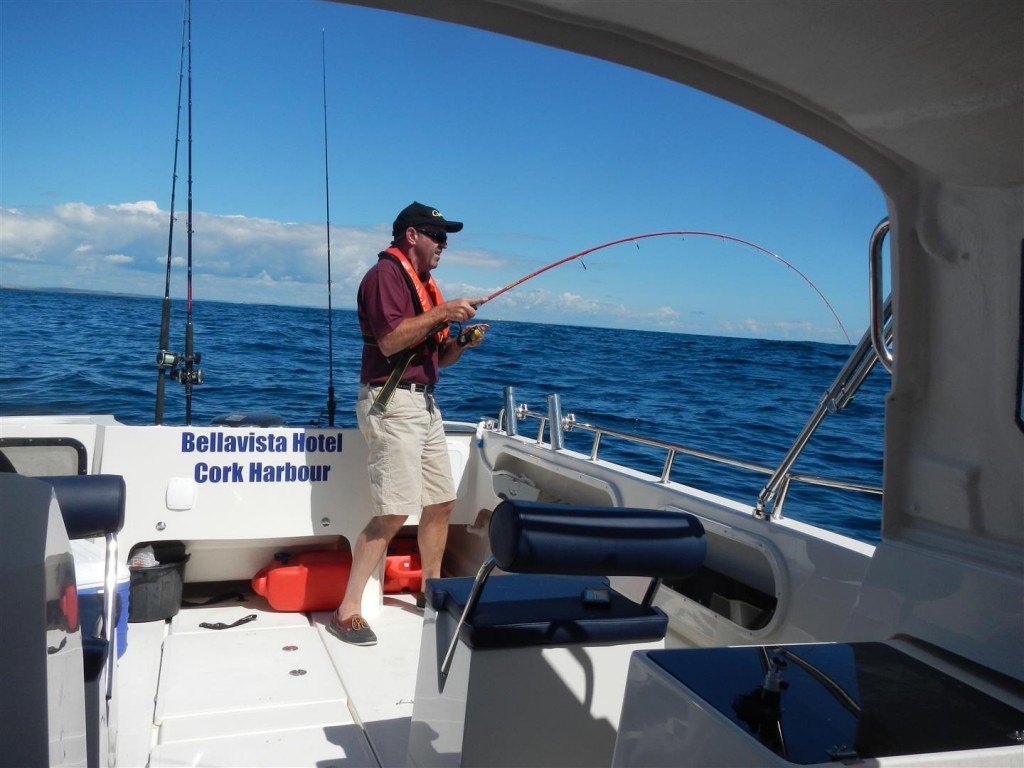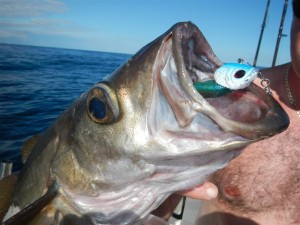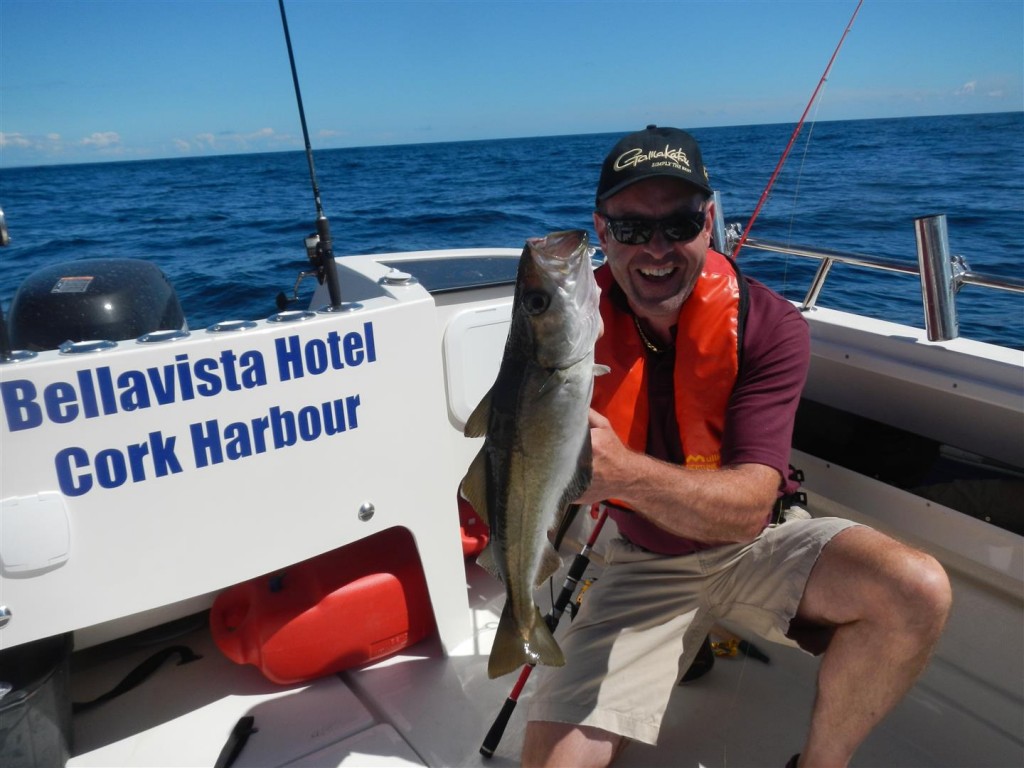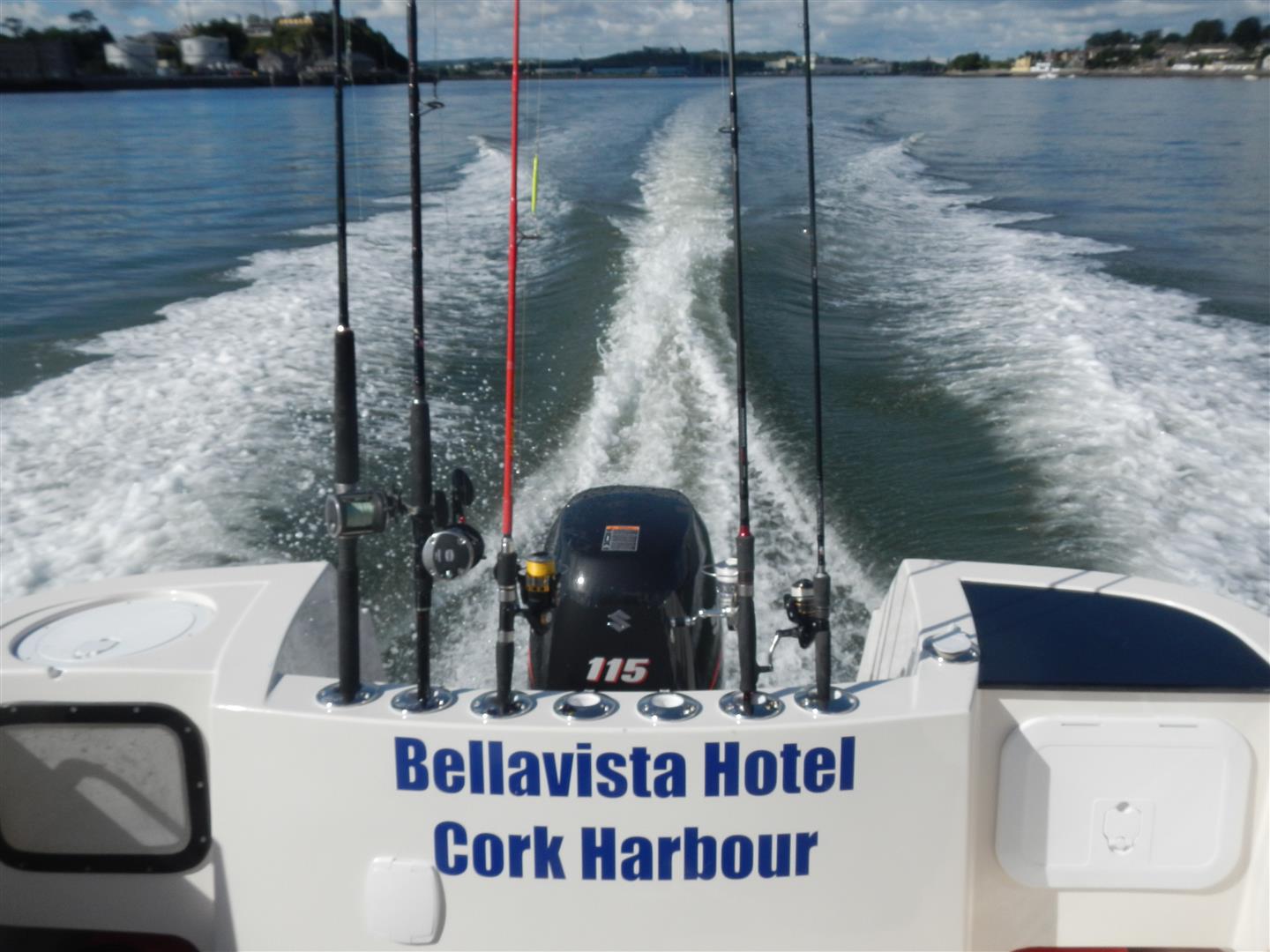* First Run Fishing – New Boat!
Thinking of getting afloat?
Fishing on the new Bellavista got me thinking about the process of buying a boat. Whether you buy a brand shiny new boat Like Kevin Murphy or you opt for a good second hand machine it ranks as one of the major purchases of your life. Changing you boat is an even more traumatic experience as you look to not repeat the mistakes you made with your first purchase!
Buying a craft is a one of the best and worst experiences of your life! Every craft is a compromise between what you can afford, what you want to do and where you want to do it. Many have slightly different jobs that they want their boat to do. Be prepared for the compromises that are inherent with getting on the water. The important thing is to prioritise the factors that go into choosing a boat.
When you are looking at changing your boat or buying your first craft there is a process that you will have to go through. It doesn’t matter whether you are buying a little lake boat for chasing trout or a serious offshore craft for tackling shipwrecks. It doesn’t matter if you are buying a single-seater kayak or a charter boat if you are to get it fairly right first time it is important to write down the things that you want to do with your boat. Ask yourself these questions:
- What is my budget?
- What do I want to do with my boat and when?
- How many people will I need to carry usually?
- How far from home base will I be operating?
- Will I be mooring the boat, tying up at a marina or launching and retrieving each time?
- Do I need a turn of speed?
- Inboard or outboard engine?
It does not end here. You will find that the truthful answer of each question will lead you to another series of questions and once these are answered the decision on your new craft will become clearer.
Budget
The amount you have to spend on a boat determines the type of boat you will have but not completely. It will in most cases determine whether you can afford to go new or whether you will be looking for a decent second hand boat. One thing I have seen time and time again most anglers will end up spending more than they budget when it comes to buying a boat. Some make the mistake of not building in the ancillaries that need to be purchased after they purchase their craft and end up under pressure as a result. It is important to list everything required for your boat as part of your preparations. Remember, budget is related to what you want to do with your craft.
What do I want to do with my boat?
It may seem obvious but many anglers do not ask the simple question before they start. Most will answer “I want to go fishing”. That is fine but when you ask about family commitments most will say that they also want to be able to accommodate the occasional family cruise or day out as well. Immediately the specification of the boat has changed to some degree. An outright angling boat will be different in layout to the “cruiser” and many will want a hybrid between the two. You might suddenly realise that you do not need a big boat. A small craft may just tick more boxes than a large vessel. You might even decide that a kayak is perfect for your needs. Whatever craft you decide you want will be balanced by the budget you have to purchase a craft.
The type or layout is usually guided by what you want to do. A kayak may be perfect for getting on the water but the solo fishing might not suit. An open boat or RIB might seem to be the perfect answer to many of your questions until the weather gets cold and you find you are not too inclined to fish in the winter and you miss the comfort of your old cuddy boat or pilot house. It is all a compromise!
Capacity
There is little point in buying a thirty foot boat if you are going to be fishing close to home and on your own most of the time! However by the same token a warrior 165 is not going to be suitable for you if you mostly fish as a party of four! Capacity reaches towards the performance or size of the boat as well.
How far from base will you be operating?
This is a vague notion and is so on purpose. In the first case we are speaking about how far we will be operating from the launch point or the marina. The answers here determine the performance required. If you are operating just a mile from base then maybe a slow boat will suffice perfectly. If you have to travel ten miles to get to fishing grounds then you may be forced down the route of a fast fisher. How far from base may also refer to how far from home the fishing goes on. How far from water are you based? Large distances may rule out towing your boat to water and now you need to budget for mooring fees, marina charges, port dues, anti-fouling and all the other logistical issues that come with the floating boat. There are as many pros and wells as cons when it comes to leaving your boat on the water.
Mooring, Marina, Towing/ Launching/Retrieving
There are pros and cons for each option. There is a huge comfort factor in having your boat at the side of your house on a stormy night. That is assuming that you have the space at the side of your house to store your boat. I have already mentioned the marina fees and antifouling are all considerations when budgeting for your boat. Simple things like an internal fuel tank can cause lots of work for the marina-based skipper. Whereas an internal tank is perfect for the towing skipper.
How important is speed?
Speed costs! Planning hulls and bigger engines all cost more money. If your fishing grounds are close to your launch point you may not have need for a turn of speed. Modern angling trends tend to drive anglers towards speed in so the skipper can visit more marks more quickly. It is also a comfort factor when angling to know you can “run for home” if the sea conditions should turn poor or dangerous. Many kayakers are using electric motors to help them move around while fishing. It might seem to be a bit pointless to be motoring in a kayak but many yakkers use electric propulsion to increase their fishing range, many paddle out at the start of the session and motor home from far greater distances than they could under paddle or pedal power.
Engine
Just as Yakkers have to make choices on propulsion so do boat anglers. The choice of outboard over inboard motor has vexed many a skipper. Both have pros and cons that effect the launching/retrieving, speed, cost of running and much more when it comes down to your choice of boat. Even when you get to outboards there are further questions – two stroke or four stroke? Even the inboard engine needs further decision making: inboard with a shaft driven propeller or inboard driven via a leg? The choice is yours depending on the compromises you will have to make.
Security
More than ever before the question of boat security is a priority for all. We’ll include here the proliferation of scam adverts for boats online. The rules here are simple-
If it appears too cheap then it probably is!
If the advertiser doesn’t want you to see the boat or cannot give you access “because they are working at the other end of the country” – Just walk away
If the advertiser wants you to transfer money, any amount, before you see the boat – Just walk away.
It is important that you verify the bone fides of the seller and the boat. Better still, buy from somebody locally or from a reputable boat dealer. Small boat angling is like a village – somebody will recognize the boat that is for sale and will know something about it.
Even before you buy your craft you need to think about secure storage. The amount of outboards that are stolen is gone beyond a joke. You need to think of secure storage for the winter time. Have you enough space at your house? Is your house secure? There have been many engines stolen from boats in supposedly secure boatyards. If you are leaving your boat in a boatyard make sure you check out insurance cover etc. In the simplest terms – the old irish ways of “you do not touch a man’s gear” is gone. There are organised gang from mainland Europe ranging across the country thieving engines. Security must be a concern for all skippers.
All the questions listed lead to further questions. If you can answer as many questions as you can you stand a better chance of getting the best package for yourself, getting something that will be right first time and will stand the test of time. Of course over time your needs and wishes will change and your experience will grow. This all helps when changing or selecting a boat. If you are contemplating getting on the water you should just go and do it. I have yet to meet the angler who regrets buying a craft. I have met plenty of anglers who have bought a craft that does not suit them so it pays to talk and research before making your final decision. Many anglers go down the self-drive hire route before deciding to purchase themselves. Apart from being a cheaper alternative to towing your boat it also gives people a chance to test the water of boat owning before actually parting with their cash. Of course it is one thing to have the craft; it’s another to know how to use it!
Admiral Tuna 600/ Smartliner 21 First impression
Don’t you just love new gear! Whether it is new lures a new rod even some new item of clothing there is nothing like the buzz of trying out new stuff. You can appreciate as a dinghy angler that I am inclined to get a little over excited when it comes to boats. Such is the case with the latest craft that is joining the Bellavista Hotel’s fleet of self-drive boats – An Admiral Tuna 660.
Soon after it arrived in country, after Kevin did the few extra jobs that all craft need before hitting the water for the first time, he gave me a shout. It was time to get the boat into the water for a shake down before the first customers would be due in a week’s time. The customers are some German tour operators so it is important that everything would go well.
We launched the Bellavista Big1 at the cross-river ferry slipway in Cobh. It is a fine launch site though not open to the public. Our plan was to begin the run-in process for the Suzuki 115hp engine fitted to the BIG1. I bobbed around for the first few minutes, leaving the engine ticking over, while Kevin parked up the trailer.
I cruised back to the slipway to pick up Kevin and soon we were picking the boat up to speed. The 115hp will cruise at twenty odd knots and has a decent turn of pace, we had her to thirty knots briefly as the run-in procedure allows. We cruised offshore towards the Ling Rocks. I could not but be impressed with the handling of the Admiral.
It is certainly a big boat. At over twenty one feet it is longer and broader than all other cuddy boats I have driven. The cuddy itself is big, maybe even too big. The driving position is further back than I would expect. Given the size of the cuddy with a little re-engineering the driving position could be moved forward into the cuddy and then the Admiral would be and even better prospect.
So why have the Bellavista bought a bigger boat? “We are getting a lot of enquiries from groups of four people. We get fewer enquiries from the groups of ten wanting charter fishing. We wanted to have an option of offering a serious four-man boat that could also take a guide if required. The BIG1 will fill this need for us.” I can definitely see the BIG1 being a perfect solution for the bigger self-drive group or guided party.
Fishing
I have an electronics fetish! I am really keen to get a look to see the electronics package that Kevin has specified for the boat. I am surprised to see that he has opted for Humminbird rather than his more normal Garmin units. Needless to say there is a story to it – A French Customer organised the units! The VHF radio is Garmin though. I have had a small play with both the sounder and the plotter and while not as easy to navigate as Garmin they look to be fairly handy enough. It will be interesting to see how the “Down Scan Imaging” will work out. In the deeper waters offshore we were using the “standard” sounder and it performed very well.
The space up front in the cuddy is perfect for storing tackle boxes. We kept the deck clear of any clutter by operating out of the cuddy. It is the perfect solution allowing the large deck area to be kept free for fishing. It will be a superbly large area for shark fishing. We set ourselves up for some drifting over the large peaks on the Ling Rocks. I think Kevin would have had a heart attack if I produced some bait and dirtied his new boat! As it was there was no fear as we both tackled up with light lure rods in order to maximise the sport. I looked after the moving between marks. The Tuna 660 drifted perfectly perpendicular to the drift. This is an important factor when you consider that there could be three anglers fishing from the one side. The boat was incredibly stable with two of us fishing on the same gunnel.
The finish of the Tuna is good. There are some edges and some bolts have been glassed over but the construction seems sound. I wonder how well the floor hatches will do, will they fill with water? There is a lot of storage space about the cockpit and there is even a small live bait well. There are some lovely features to this boat but there are some annoying ones too.
We will report back after a season! The Tuna 660 is part of a stable of boats. They are being sold in the UK under the handle of : Mariner 180, Mariner 190 & Mariner 210 . They are also called Profish 660 and Profish 560 via EP Barrus Importers to the UK. Website here.
Longer term review:
The Tuna is a fine boat. Like all boats, there are some flaws, but on balance many of these can be corrected. Such was the success BellaVista bought a second one. The second boat was kitted out with a Suzuki 140hp. The boat needs a 140hp at least. The 115hp on the first boat left it underpowered and struggling with a full load and anything other than flat calm seas. They really need a long-shaft motor as well. Cavitation was an issue on the shorter, usual length motor.
Kevin Modified his boats in that he installed internal fuel tanks on boat. He felt this suited better and made for a more comfortable boat all round. The boats suffered a bit from poor quality fasteners causing rust streaks but other than that the boats performed well. Certainly the 140hp version is a formidable craft. It would be on the very edge of what’s considered a towable dinghy or small boat but then it is a bug craft and you get the benefit of a stable fishing platform.
(There are more details at the end of this article)
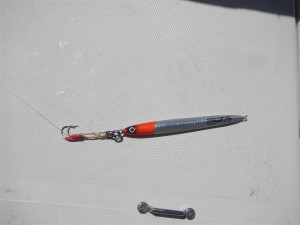
Our tactics were simple – drop to the bottom, touch down, and reel up a few turns briskly all the while imparting some more movement to the lure. Count the turns and keep an eye on the sounder screen. You will be surprised at how quickly you will be at mid-water. If you do not have a bite at this stage then drop to the bottom again. Hugging the bottom should yield cod, ling and wrasse and moving up the water column will yield pollack. Make sure you have your drag set on your reel as a crash diving pollack will break the toughest line or pull the strongest lure. Decent pollack have damaged decent lure rods where the drag was not set properly.






